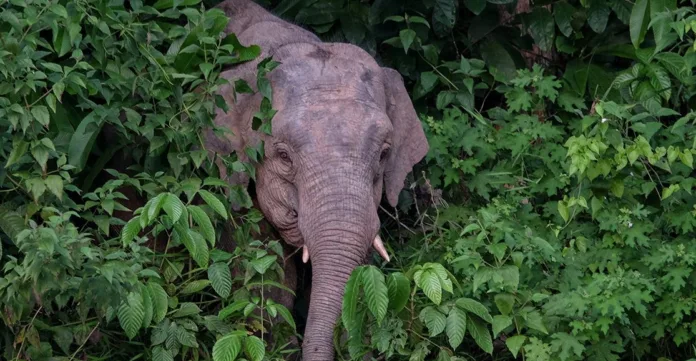The Bornean elephant, unique to Borneo and notably smaller than its Asian cousins, is on the brink of extinction due to habitat loss and human-wildlife conflict
The Bornean elephant, renowned for its diminutive stature compared to other Asian elephants, is perilously close to extinction with only approximately 1,000 individuals remaining in the wild. Found exclusively on the island of Borneo, these gentle creatures have captured the attention of conservationists worldwide due to their unique evolutionary path and distinct characteristics.
Habitat destruction, primarily driven by deforestation for industries like palm oil, poses the greatest threat to Bornean elephants. As their forest homes disappear, elephants are increasingly pushed into human settlements in search of food, leading to conflicts that often result in retaliatory killings. Additionally, activities like hunting for ivory and accidental poisoning from agricultural chemicals further endanger their fragile population.
Despite these challenges, there is optimism among conservationists. Benoit Goossens, a wildlife biologist at Cardiff University and director of the Danau Girang Field Centre in Sabah, underscores the importance of conservation efforts in Sabah, Malaysia, where most Bornean elephants are concentrated. He highlights ongoing initiatives involving both governmental and non-governmental organizations aimed at preserving elephant habitats and mitigating human-wildlife conflict.
The International Union for Conservation of Nature (IUCN) has recently categorized Bornean elephants on its Red List as an endangered subspecies of the Asian elephant. This designation aims to raise global awareness and garner support for intensified conservation measures. Professor Adrian Lister of London’s Natural History Museum emphasizes the significance of this listing, suggesting that increased scrutiny will compel authorities to prioritize habitat protection and species conservation.
The expansion of the palm oil industry in Malaysia and Indonesia, coupled with unchecked deforestation, has exacerbated the plight of Bornean elephants. These activities not only diminish elephant habitats but also contribute to broader ecological degradation, impacting biodiversity and human livelihoods in the region. Efforts to address these issues are crucial not only for the survival of Bornean elephants but also for the conservation of biodiversity on Borneo as a whole.
Analysis:
Political: The plight of Bornean elephants underscores the intersection of environmental conservation and political policies regarding land use and economic development. Balancing industrial interests with wildlife protection remains a critical challenge for governments in Southeast Asia.
Social: The story of Bornean elephants highlights broader social issues such as human-wildlife conflict and the ethical implications of habitat destruction. It prompts discussions on sustainable development practices and the responsibilities of global consumers in mitigating environmental impacts.
Economic: The economic interests driving deforestation, such as palm oil production, pose significant challenges to biodiversity conservation. Efforts to integrate conservation into economic planning are crucial for achieving long-term sustainability and preserving natural ecosystems.
